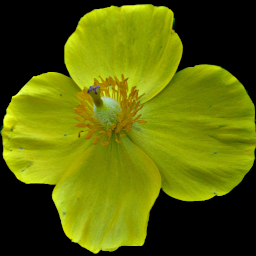
The genus Epilobium includes some spectacular flowers, like Fireweed (E. angustifolium). It also includes these little weeds that you pass right by without noticing. They’re worth a look, though: up close the flowers are beautiful, and the plants often have purple stems or even purple leaves (in spite of the English name, purple leaves are by no means guaranteed) that add to the decorative effect. They like moist areas, and seem to have a special affinity in the city for damp sidewalks. The plant at right grew in the angle between a stone retaining wall and the sidewalk along a street in Beechview. The one below grew directly out of a crack in that same wall.
There are several similar species of Epilobium that have insignificant flowers like these, but this is the only one reported by Porter’s Flora of Pennsylvania and Shafer’s Preliminary List of the Vascular Flora of Allegheny County, Pennsylvania, as occurring in Allegheny County. “At best,” says Mathews (Field Book of American Wild Flowers), “the Epilobiums are a difficult genus to separate distinctly, and are not a little puzzling to the botanist.”
Gray describes the genus and the species:
EPILÒBIUM L. WILLOW-HERB. Calyx-tube scarcely or not at all prolonged beyond the ovary; limb 4-cleft or -divided. Petals 4, violet, magenta, pink, or white. Capsule slender, many-seeded. Seeds with a tuft of long hairs at the end. — Mostly perennial herbs with nearly sessile leaves. (Name from epi, on, and lobion, a little pod.)
E. coloràtum Muhl. Stem erect, not stoloniferous (often developing in late autumn sessile or subsessile basal rosettes), 3-9 dm. high, usually muchbranched, glabrous below, canescent at least in lines above with incurved hairs; leaves elongate-lanceolate, 6-16 cm. long, 1-2 cm. broad, distinctly short-petioled, closely and irregularly serrulate; flowers abundant on the divergent branches; petals pink, 3-5 mm. long; pedicels short; seed 1.6 mm. long, abruptly rounded at tip, minutely papillate; mature coma cinnamon-colored. — Low ground, Me. to Neb., and southw. July-Sept.
In The Species of Epilobium Occurring North of Mexico, William Trelease gives a fuller description, and points out the difficulty even botanists have in sorting out closely related species of Epilobium:
E. coloratum, Muhl. — Glabrate below, the rather numerous panicled branches canescent with incurved hairs at least along the decurrent lines, and more or less glandular towards the end; leaves 50 to 150 mm. long, lanceolate to oblong-lanceolate, acute, deeply and irregularly serrulate, mostly gradually narrowed to conspicuous slender petioles, glabrous except the uppermost, dull, thin, rugose-veiny; flowers very numerous, more or less nodding; petals 3 to 5 mm. long, rosy; fruiting peduncles slender, mostly short; seeds obconical-fusiform, beakless, strongly papillate, .3 x 1.5 mm.; coma at length cinnamon-colored, at least at base. — Willd. Enum. i. (1809), 411; Haussknecht, Monogr. 258; Barbey & Cuisin, pl. 9.—Wet ground and meadows, Canada to South Carolina, west to Wisconsin, Nebraska, and Missouri. — Specimens examined from Ontario, Maine, Massachusetts, Connecticut, New York, New Jersey, Pennsylvania, Virginia, South Carolina (Ravenel), West Virginia, Ohio, Illinois, Missouri, Kansas, Nebraska, Iowa, and Wisconsin.
This species, the general type of which is reproduced in a number of others which here follow it essentially in the order of their leaf and habit resemblance, differs from all of its congeners in the degree of serration of its leaves and especially in its elongated seeds destitute of the usual apical beak, and from all with which it is likely to be confounded, in the nearly cinnamon-colored ripe coma (which, however, is white in immature capsules that have dehisced while drying). It is apparently everywhere associated with E. adenocaulon, which begins to flower and fruit about a fortnight earlier, and differs in its very shortstalked leaves, rounded at base and less sharply toothed, and in its shorter seeds abruptly contracted and hyaline-beaked above, and with pure white coma. West American specimens which have been called E. coloratum belong, for the most part, to forms of adenocaulon.

 Hard to tell from White Sweet Clover (M. alba) until they both bloom. When they do bloom, the yellow species reveals sloppier habits; the flower spikes are more ragged than the ones of M. alba, with withering flowers retained for a long time. Nevertheless, the delightful scent is enough to make us forget the slight slovenliness of the presentation. Yellow Sweet Clover grows plentifully along roadsides, and is often one of the first plants to colonize a recently disturbed site; this plant was growing in a park in Beechview where the earth had just been replaced after the building of a new playground. It was blooming in the middle of July.
Hard to tell from White Sweet Clover (M. alba) until they both bloom. When they do bloom, the yellow species reveals sloppier habits; the flower spikes are more ragged than the ones of M. alba, with withering flowers retained for a long time. Nevertheless, the delightful scent is enough to make us forget the slight slovenliness of the presentation. Yellow Sweet Clover grows plentifully along roadsides, and is often one of the first plants to colonize a recently disturbed site; this plant was growing in a park in Beechview where the earth had just been replaced after the building of a new playground. It was blooming in the middle of July.




